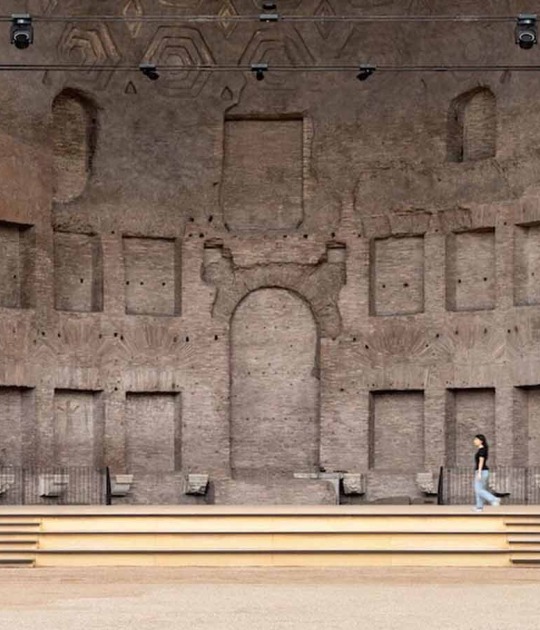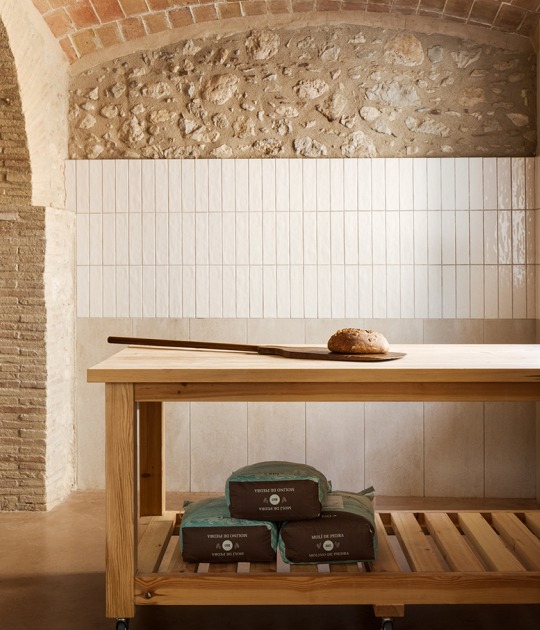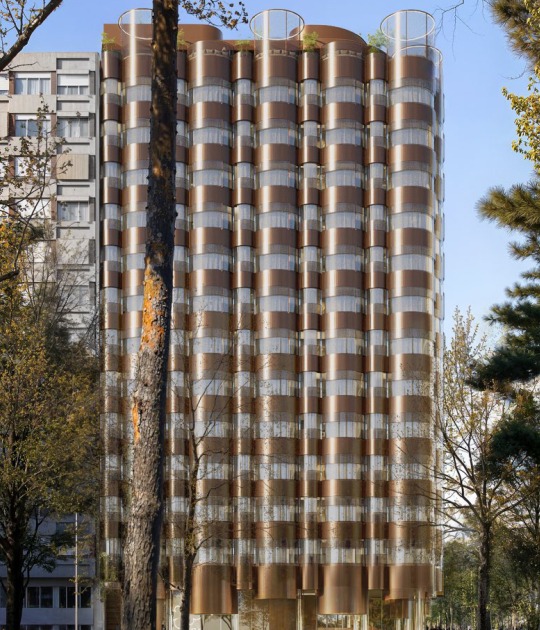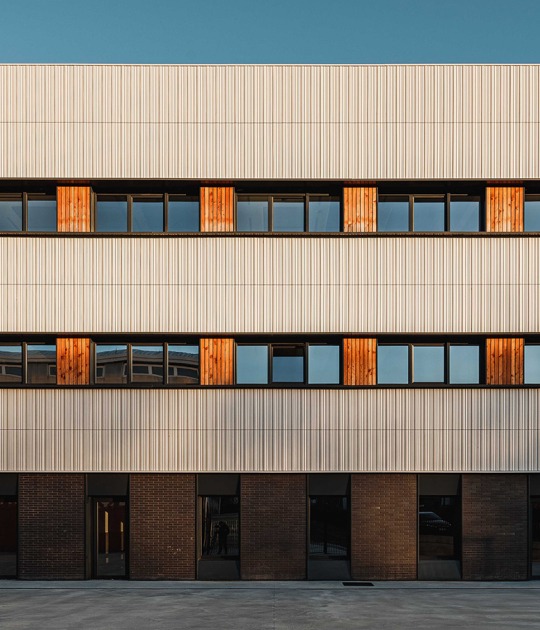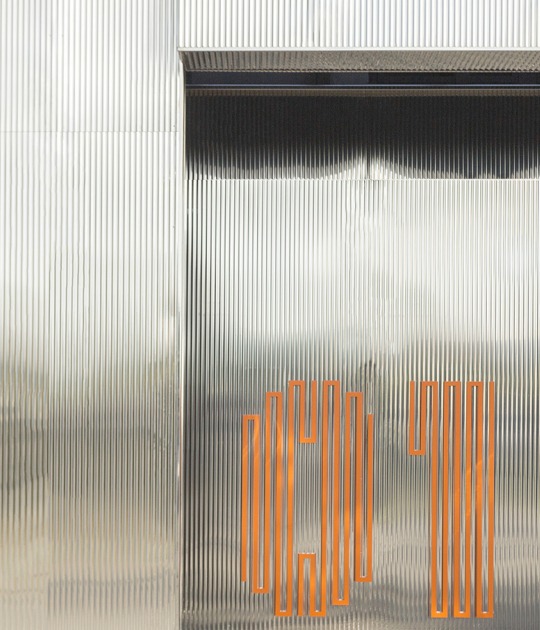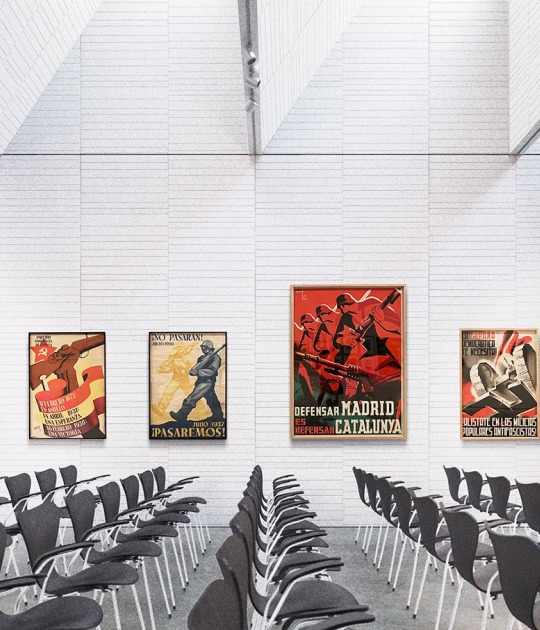Lacol organizes the space in dialogue paying attention to mandatory urban protection of the buildings, conditions that finally become allies to resolve the design, which orbits around a central patio favouring ventilation, as well as lighting, and is a meeting social point, that becomes the motor of the activities.
The program is developed on the ground and first floors, trying to recover the initial geometry and adding a small new construction building on the dividing wall of the nearby houses.
The project is characterized by an interesting and committed application of sustainable processes in its construction and energy maintenance, in which a climate strategy divided into three axes has been implemented: greenhouses for solar capture, a water tank of 5,000 liters that takes advantage of the rain and the
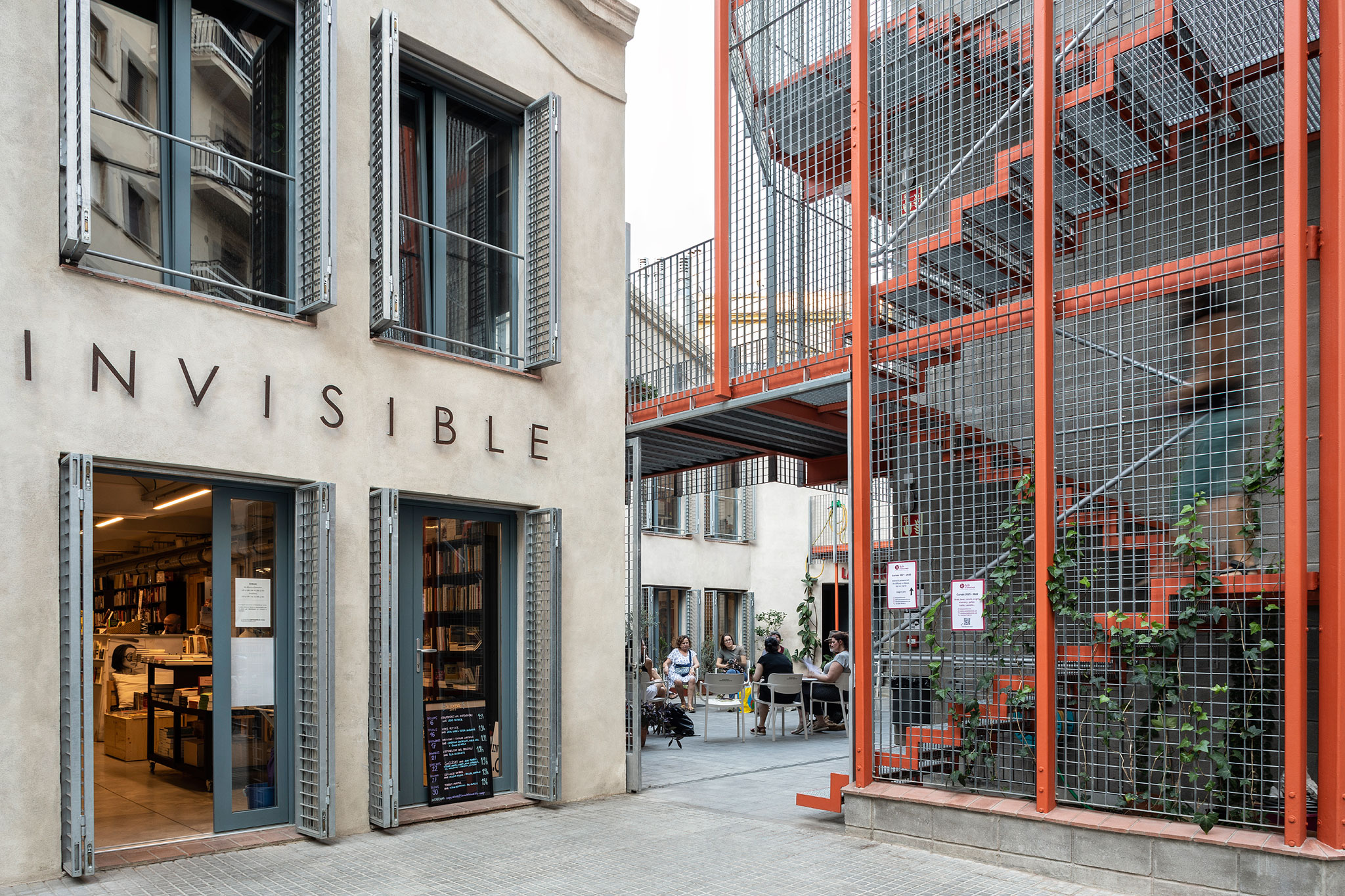
La Comunal by Lacol. Photograph by Baku Akazawa.

La Comunal by Lacol. Photograph by Álvaro Valdecantos.
Description of project by Lacol
La Comunal occupies half of a block in the Sants district of Barcelona. It is a protected industrial building, built in 1926 for the manufacture of naval sails. It is currently the workspace of eight organizations, including Lacol.
In the intervention, the initial geometry has been recovered, rehabilitating the original constructions and adding a small new building to the dividing wall of the neighboring houses. The central courtyard, in addition to allowing ventilation and lighting of all the spaces that surround it, is an element of centrality to meet with others.
The buildings, except the restaurant and concert hall, received a minimum treatment. On the roofs, after removing the pieces of fiber cement with asbestos, we placed corrugated galvanized steel sheet and thus differentiate those materials added in the project from the existing ones.
We have divided the climate strategy into three axes. Starting with the air, greenhouses have been incorporated to capture Sun heat, and the air-conditioned square meters have been reduced. As for the water, a 5,000 liter tank allows the use of the water from the roofs for irrigation and cleaning. Finally, the material intervention of the existing buildings has focused on their consolidation and their energy and bioclimatic behavior. Insulation has been improved with a mix of lime and cork mortar to ensure compatibility and behavior with the materials and techniques required in a heritage intervention. 1,200 linear meters of joists have been reused as rakes to place the roof insulation. Floors and other elements in contact with the ground have been insulated with envelopes from rigid insulation from the sandwich panel industry.

La Comunal by Lacol. Photograph by Álvaro Valdecantos.
1 Implementation Strategy
La Comunal occupies half of the block between the streets of En Blanco, Tenor Masini and Riera d’Escuder. It is a cataloged building by the town hall, and urbanistically it is misaligned with the urban fabric of the place. In 1926, it was three years before Barcelona received the 1929 Universal Exposition. That same year, line 1 of the metro was inaugurated. These are the years leading up to an important time for a city in its way to be infrastructured. This is the context in which La Comunal was built, first to be a warehouse and later, a textile industry.
Subtraction and recovery of original geometry
The volumetry prior to the work had blurred the original shape. What is now a courtyard, walkways and accesses was a fully built and enclosed ground floor. The first phase of the intervention was to recover the initial geometry.
Mitgera equipada
The party walls of the neighboring building become a façade when the common spaces are built at its end shaping the patio.
Rehabilitation of spaces
The warehouses, except for the restaurant and the concert hall, receive a minimum treatment where the priority is to consolidate the whole structurally and to make flexible the possible ways of occupying them with modular and adaptable facilities. On the outside, it has been important to study the original composition of the façades to intervene respectfully.
Patio and circulations
The new work gives up an optimal floor plan to achieve a courtyard and circulations that follow the original alignment of the complex. The courtyard, with the multipurpose room that forms a unit, is understood as the stage of a theater where the walkways, which act as balconies, surround it.
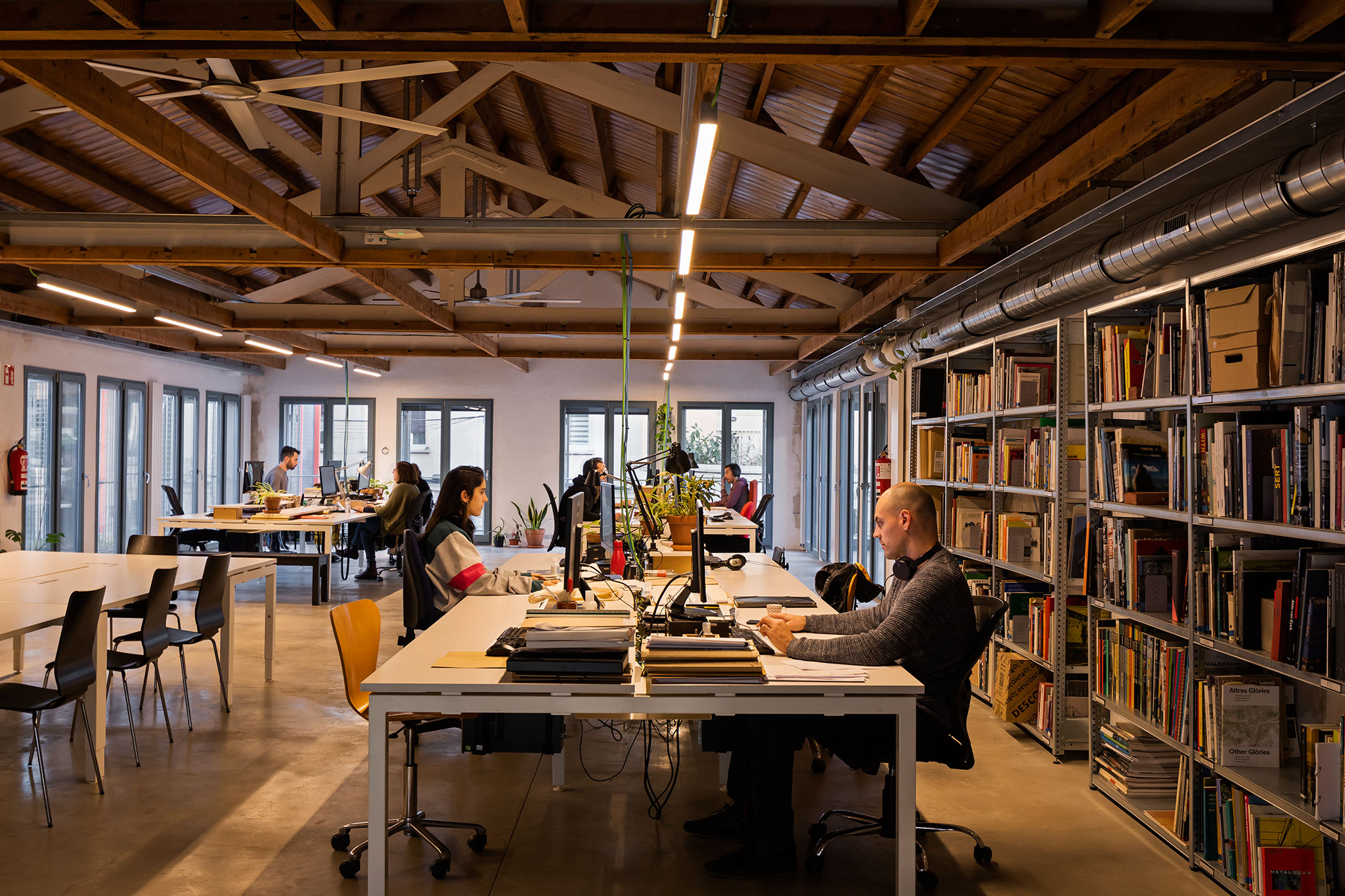
La Comunal by Lacol. Photograph by Álvaro Valdecantos.
2 Use program
La Comunal has always been a place of labor, before manufacturing and storage and now services, it has never ceased to be a professional facility in its 95-year history.
Uses
The uses for which the original buildings were designed were housing, shop and warehouse and the uses for those who have been rehabilitated are store, offices, concert hall, restaurant and common areas. The flexibility afforded by such a clear separation of the spaces served by the servers has been key to accommodating a greater number of uses. The creation of a third strip of server spaces that arises from the north corner organizes the courtyard, the new building and makes the circulations follow a rhythm with server spaces between spaces served.
3 Heritage Strategy
It is a small size factory of which very few remain standing. We extend its life cycle and reconvert the manufacturing industry into cooperative culture linked to the neighborhood.
Volumetry
It is necessary to respect the original shape of the warehouses in the same way that it is necessary to apply an energy criterion to the heritage. The result of this debate has been the greenhouses located on the interstitial spaces where the accesses and the server spaces are located. While blurring the outline achieve emphasize the sequence of three parts separated them using bioclimatic elements.
Emptying the courtyard is another fact that allows us to recover and recognize what the warehouse were like in the past. In addition to allowing ventilation and good light conditions of all the spaces that surround it, it provides an element of centrality and versatility where we can meet and where everything that is beyond work can happen.

La Comunal by Lacol. Photograph by Álvaro Valdecantos.
Acces
The main façades remind us that the principal street, still in the 1920s, was En Blanco street. Today, motorized transport has made the animal disappear and the slopes of the streets are no longer a problem, so the main access is through Sants street. However, the urban fabric has changed and the buildings, out of alignment, cause widening of the street marking the accesses to the complex.
Facades
Composed as an eclectic ornament in times of political darkness, we have found facades with two superimposed stuccoes from 1926, the first and the 1940s, the second. Advised by restoration specialists, we have chosen to recover the first style, with a palette of colors and shapes closer to modernism. This process is called facade impoverishment.
Roofs
After removing the fiber cement pieces with asbestos and with the intention of obtaining a light roof, we placed corrugated gal-vanized steel sheet and thus differentiate those materials added in the project from the existing ones. On the other hand and with the desire to reuse those materials that were in good condition, we have been able to reuse more than 1,200 linear meters of the beams that supported the ceiling in order to grow the 15 cm of insulation on the decking cover.
4 Climate, Ecological and Urban Planning Strategy
We have divided the sustainability strategy of the project into different axis related to material and climatic issues directly affecting energy demands and consumption.
Air
Greenhouses and the reduction of heated square meters have been the lines of action that have structured this axis.
Renewal air is pre-treated in greenhouses before entering offices, preheating it in the winter and cooling it in the summer.
The server spaces have been left outside the heated enclosures. Circulations, office, toilets and accesses do not receive thermal comfort treatment and in some cases there is not even protection from the rain.
Building less in all those places considered transitory has been the result of a debate that sought to minimize impacts at all levels.
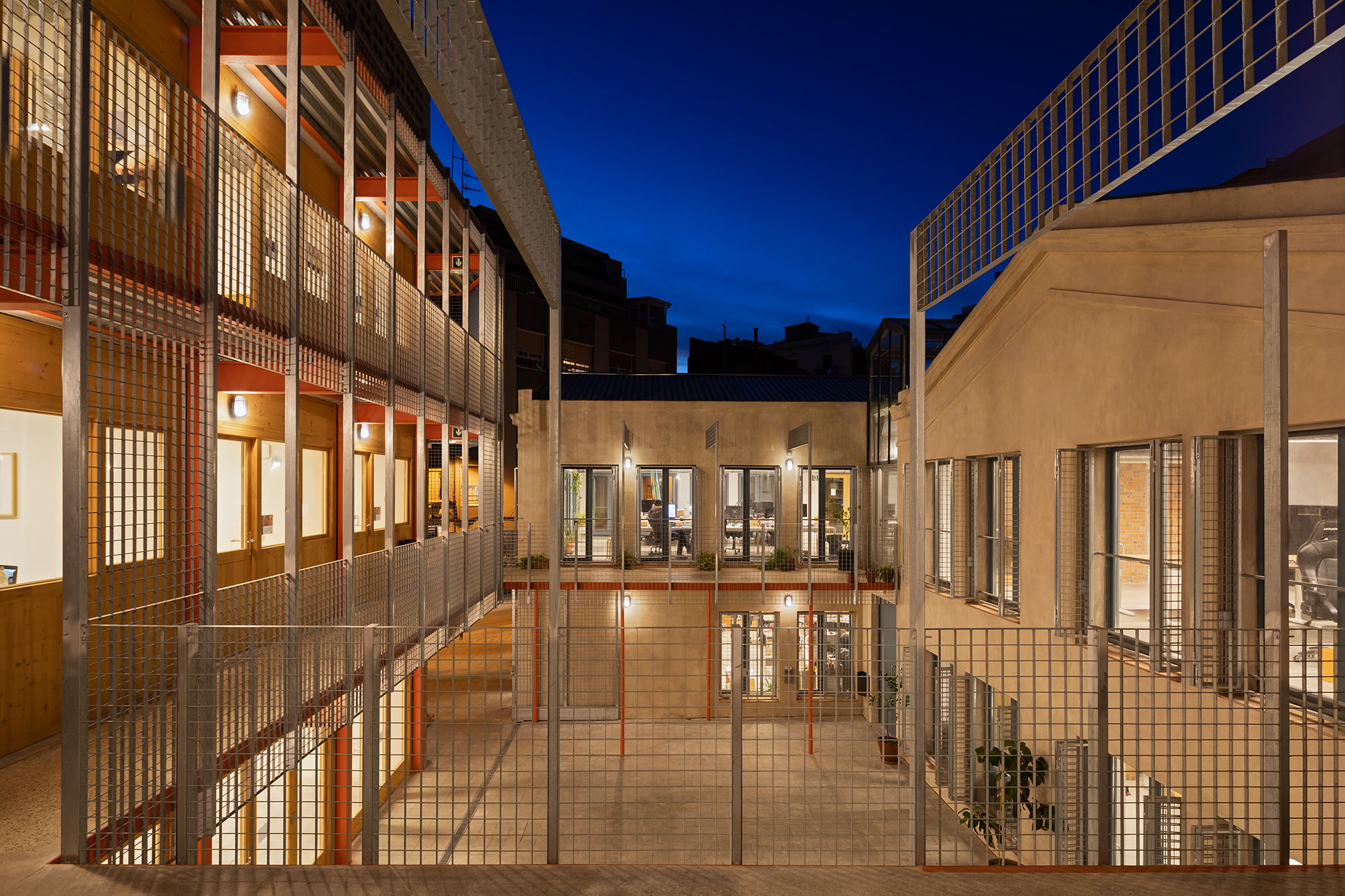
La Comunal by Lacol. Photograph by Álvaro Valdecantos.
Water (blue and green)
Given the dichotomy of using drinking water for irrigation or cleaning of spaces, the use of rainwater seemed the best option to address this second axis. Under the courtyard we will find a tank of 5,000 liters of water that is filled with water collected from the roofs of the building. In a second phase, the new building and the courtyard will receive a greening process with climbing vegetation and automatic irrigation systems connected to the tank.
Materials (grey)
Materially, the intervention of the warehouses has focused, above all, on their structural consolidation and on the improvement of their energy and bioclimatic behavior. The possibility of insulating the walls on the outside, avoiding thermal bridges and achieving the highest thermal inertia on the inside has been possible thanks to lime and cork mortars. The beams that supported the reed ceiling have been reused as rakes with which to grow 15 cm where the roof insulation is placed. Floors and other elements in contact with the ground have been insulated with rigid foams from the sandwich panel industry.
Urbanims
Advised by the team of sustainability consultants and with the climate shelters (green, blue and gray) as references, the courtyard of La Comunal, after the second phase of greening, will become a safe space in terms of urban planning and climate change. Proper disposal of the lights, humid shade when it is hot, security, accessibility and human attention are some of the characteristics with which the space has been designed.













































